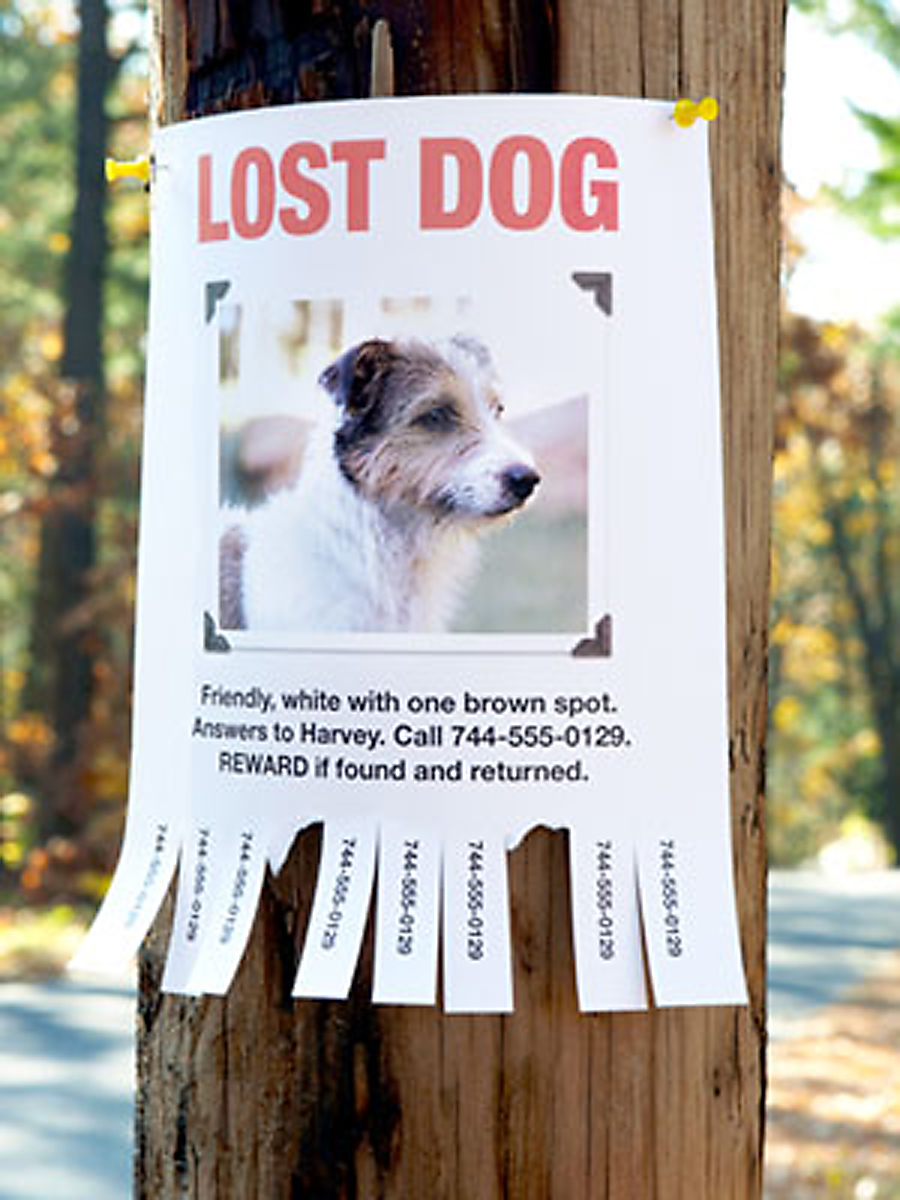
This is the beginning of the holiday season. Kids are going back to school and there is a lot of hustle and bustle. There is a chance your dog may be a little nervous or stressed out with everything that’s going on. You need to be extra careful or your pet may just slip out the door. Here are a few factors that influence a lost dog in case yours gets loose:
Temperament of the dog. Friendly dogs are the most likely to walk up to the first person they see, be rescued and either returned to the owner, taken to a shelter or “adopted” by the finder. Aloof dogs are more likely to avoid strangers until they get hungry, and may travel a considerable distance before someone befriends them. Fearful dogs are likely to travel farther and actively avoid contact with humans, even when hunger calls. Sometimes the only way to capture a fearful dog is with the use of a humane trap.
Circumstances of the disappearance. A dog who wanders out of curiosity is likely to stay close to home and wander back in fairly short order. One who bolts from fear can run for several miles in blind panic.
Terrains. Wide, open spaces are more conducive to distance travel than residential neighborhoods, where fences create barriers to travel.
Appearance of the dog. “Warm fuzzy” dogs are quicker to be rescued than large, aggressive-appearing dogs. Someone who may quickly stop to pick up a Cocker Spaniel or a furry Labradoodle may think twice before inviting a roaming Rottweiler into her car. Purebred dogs may also be picked up more quickly – as people sometimes mistakenly thinks it’s normal for mixed breeds to be roaming the streets but a purebred dog “must belong to someone.”
Weather. A dog in a blizzard or a driving rainstorm is likely to seek shelter. A dog wandering in 95-degree heat will seek a cool spot and settle down. A dog on a sunny autumn day may happily chase deer and wander farther than one inhibited by bad weather conditions.
Population densities. It’s just common sense that more people there are around, the more likely it is that your dog will be seen and reported to you, or rescued by someone who calls you or the local shelter. If you lose your dog in a wilderness area and she has wide open spaces in which to travel far, and is relying on only you to find her.
What you can do? Make sure you have several forms of identification solidly attached to your dog or cat. We strongly recommend using implanted microchip ids, too. Put your dogs name on their id so they can be as comfortable as possible, with their finder.



